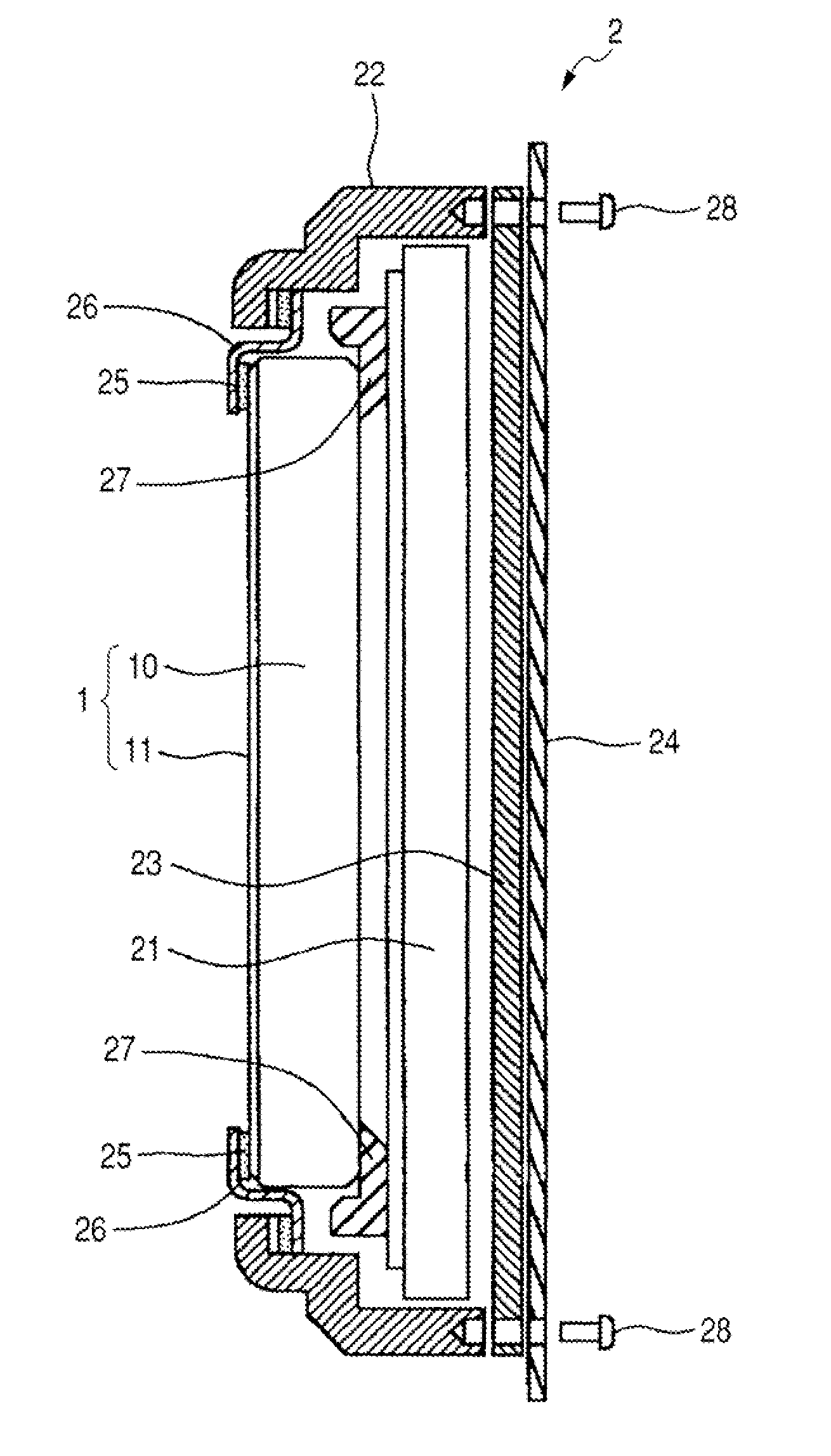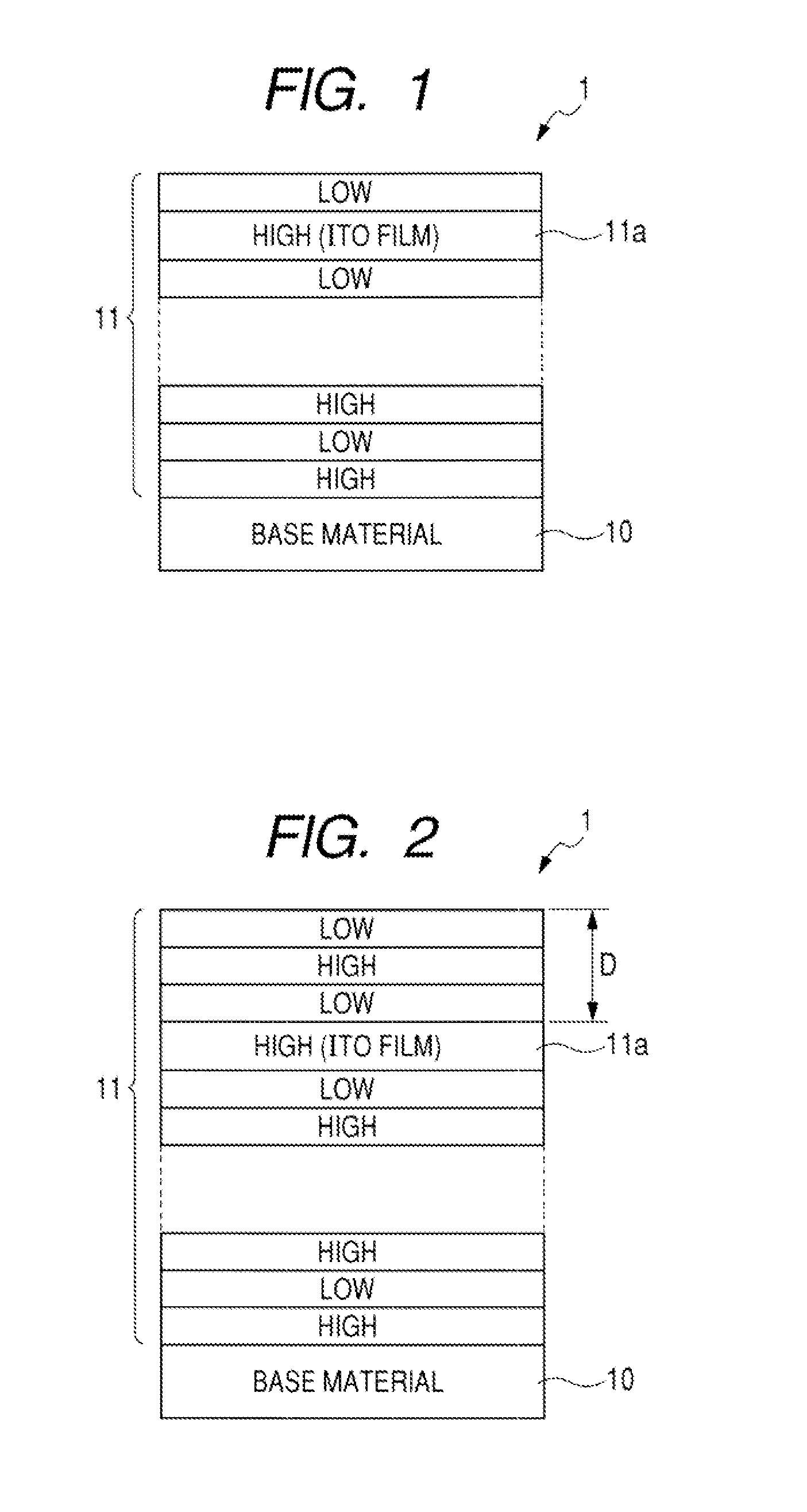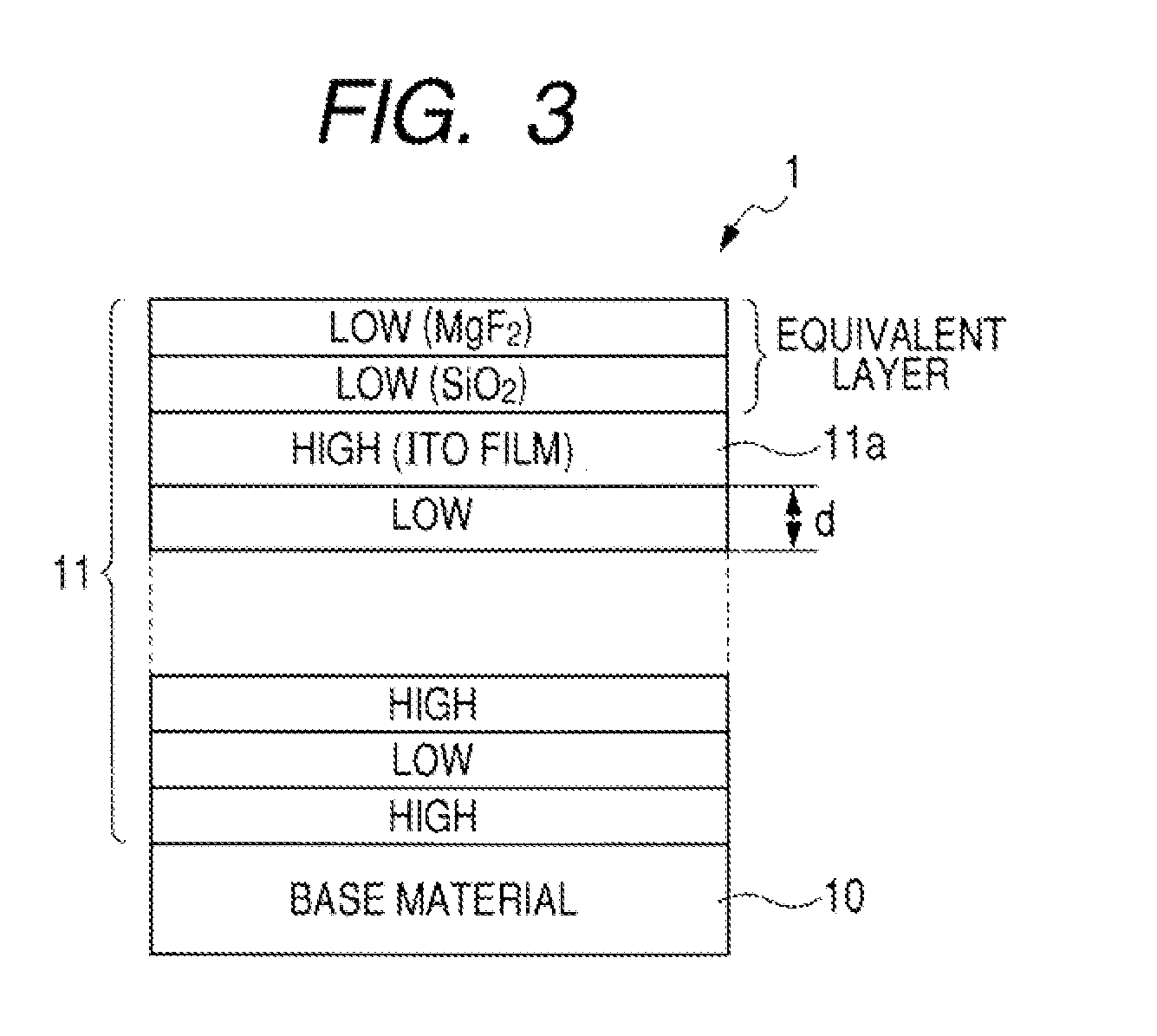Optical Low-Pass Filter
- Summary
- Abstract
- Description
- Claims
- Application Information
AI Technical Summary
Benefits of technology
Problems solved by technology
Method used
Image
Examples
Embodiment Construction
[0041]In the below, an embodiment of the invention is described by referring to the accompanying drawings. Note here that the invention is not at all restrictive to such an embodiment.
[0042]FIG. 1 is a schematic diagram showing an embodiment of a low-pass filter in the invention. A low-pass filter 1 in the drawing includes a coating layer 11 of blocking infrared radiation formed on the surface of a base material 10. The coating layer 11 of blocking the infrared radiation includes a high-refractive layer and a low-refractive layer sequentially disposed alternately on one on the other. One of the high-refractive layers is configured by an ITO (Indium Tin Oxide) film 11a made of a mixture of indium oxide and tin oxide being a transparent conductive material. With such a configuration, the surface of the coating layer is increased in conductivity, and the attachment of dirt and dust due to static buildup can be effectively prevented.
[0043]Among the high-refractive layers configuring the...
PUM
| Property | Measurement | Unit |
|---|---|---|
| Thickness | aaaaa | aaaaa |
| Thickness | aaaaa | aaaaa |
| Thickness | aaaaa | aaaaa |
Abstract
Description
Claims
Application Information
 Login to View More
Login to View More - R&D
- Intellectual Property
- Life Sciences
- Materials
- Tech Scout
- Unparalleled Data Quality
- Higher Quality Content
- 60% Fewer Hallucinations
Browse by: Latest US Patents, China's latest patents, Technical Efficacy Thesaurus, Application Domain, Technology Topic, Popular Technical Reports.
© 2025 PatSnap. All rights reserved.Legal|Privacy policy|Modern Slavery Act Transparency Statement|Sitemap|About US| Contact US: help@patsnap.com



